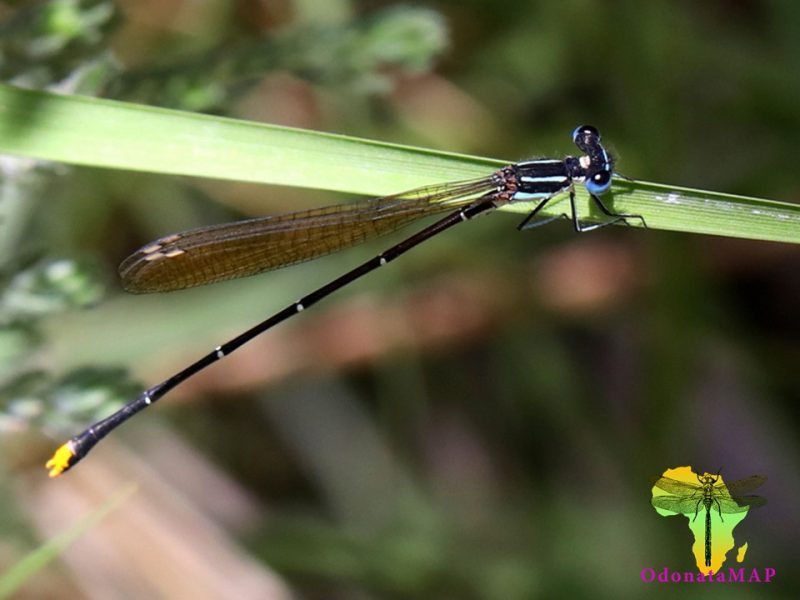View the above photo record (by Corrie du Toit) in OdonataMAP here.
Find the Goldtail in the FBIS database (Freshwater Biodiversity Information System) here.
Family Platycnemididae
Allocnemis leucosticta – GOLDTAIL
Identification
Small to medium sized
Length up to 46mm; Wingspan reaches 57mm.
A distinctive and easily recognised damselfly. Unlike any other species in the region.
Largely black above and pale below with light blue-green stripes on the thorax. The diagnostic features include amber-washed wings with large white pterostigmas, and the males have golden-yellow terminal segments on the abdomen.
Females are similar but lack the golden yellow abdomen tips.
Click here for more details on identification.
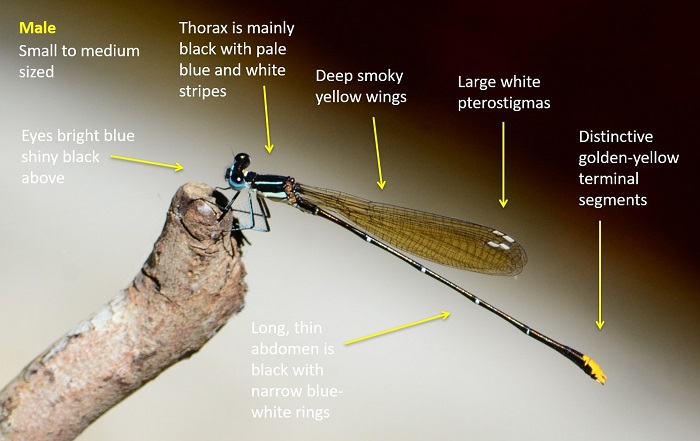
Moordkuil River, Western Cape
Photo by Ryan Tippett

Everton, KwaZulu-Natal
Photo by Rob Dickinson
Habitat
This is a shade-loving species of forested or well wooded streams and rivers. It prefers streams that have clear, shallow water. This is mostly a species of mid to high altitude areas, but occurs at sea level in some places in KwaZulu-Natal and the Southern Cape. Allocnemis leucosticta is occasionally found at more open streams surrounded by grass and bushes, particularly in fynbos and montane grassland habitats.

Photo by Ryan Tippett
Behaviour
The males are rather noticeable as they sit in exposed positions over the stream in dappled sunlight. Their white pterostigmas and yellowish wings are conspicuous in flight. The females are often found near the males but are less numerous and not as obvious. Allocnemis leucosticta almost always perch on twigs, stems or vegetation over or close to the water.
Most active from October to April. See Phenology below.
Status and Conservation
Allocnemis leucosticta is endemic to South Africa. It is common but localised due to its habitat requirements. It is listed as Least Concern in the IUCN Red List of Threatened Species. Goldtails are fairly sensitive to habitat degradation. They are intolerant of dirty water, but can be found on streams with some alien vegetation.
Distribution
Found in the mid to high altitude escarpment areas of South Africa and Swaziland. Ranging from Table Mountain in the Western Cape to the Soutpansberg in Limpopo.
Below is a map showing the distribution of records for Goldtail in the OdonataMAP database as at February 2020.
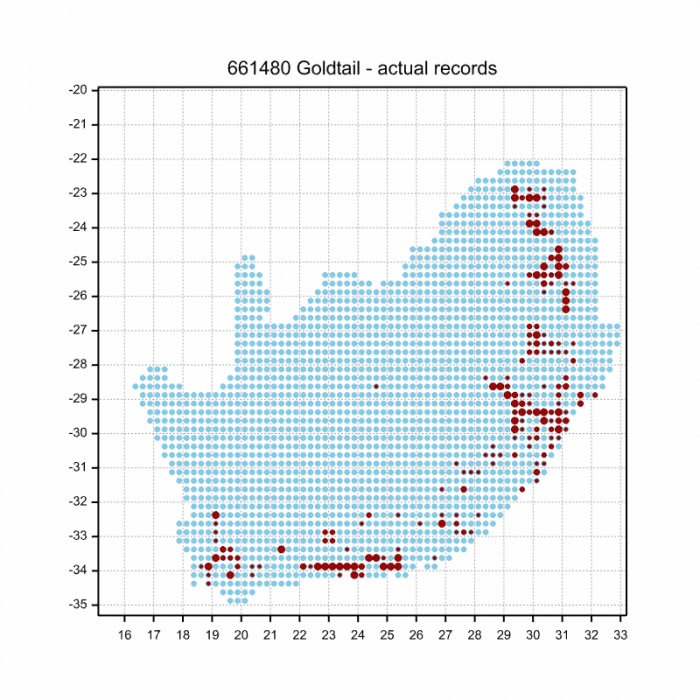
The next map below is an imputed map, produced by an interpolation algorithm, which attempts to generate a full distribution map from the partial information in the map above. This map will be improved by the submission of records to the OdonataMAP section of the Virtual Museum.
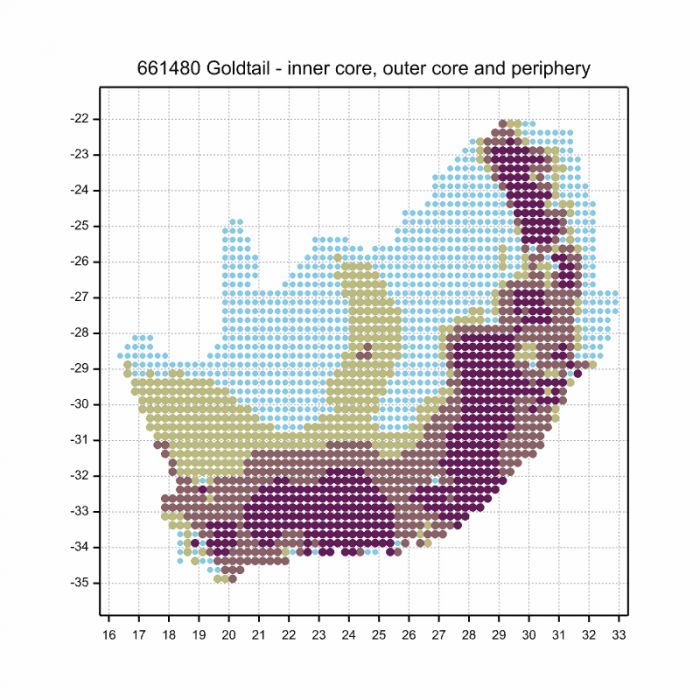
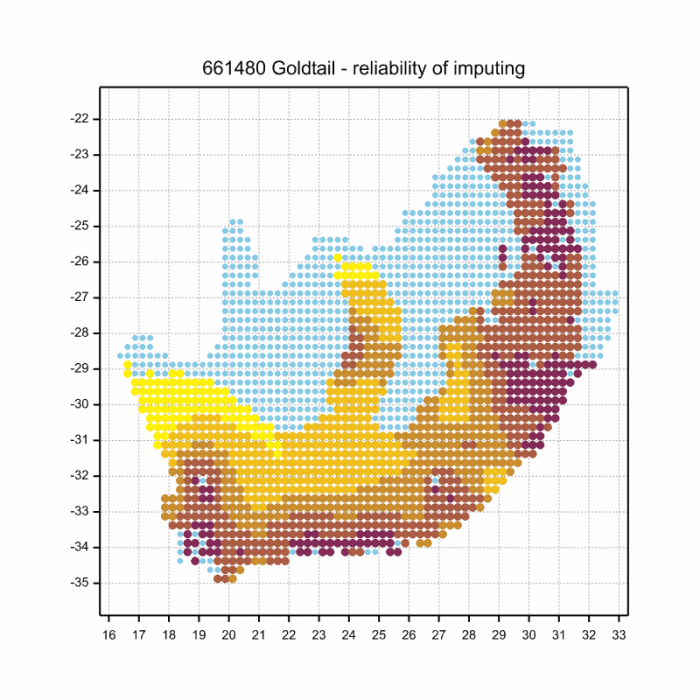
Ultimately, we will produce a series of maps for all the odonata species in the region. The current algorithm is a new algorithm. The objective is mainly to produce “smoothed” maps that could go into a field guide for odonata. This basic version of the algorithm (as mapped above) does not make use of “explanatory variables” (e.g. altitude, terrain roughness, presence of freshwater — we will be producing maps that take these variables into account soon). Currently, it only makes use of the OdonataMAP records for the species being mapped, as well as all the other records of all other species.
The basic maps are “optimistic” and will generally show ranges to be larger than what they probably are. These maps use the data in the OdonataMAP section of the Virtual Museum, and also the database assembled by the previous JRS funded project, which was led by Professor Michael Samways and Dr KD Dijkstra
Phenology



